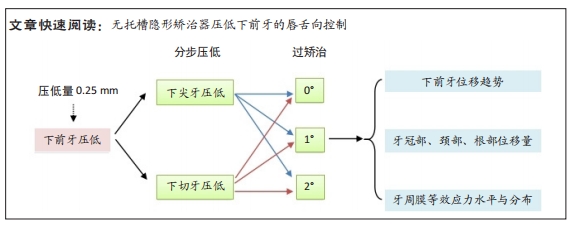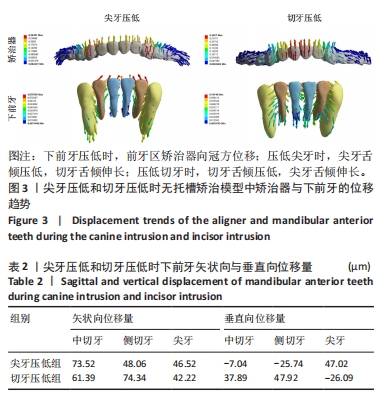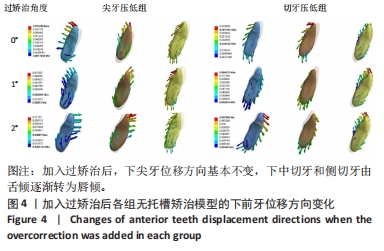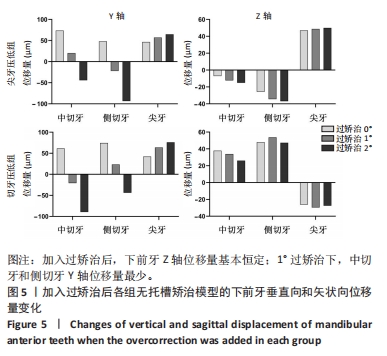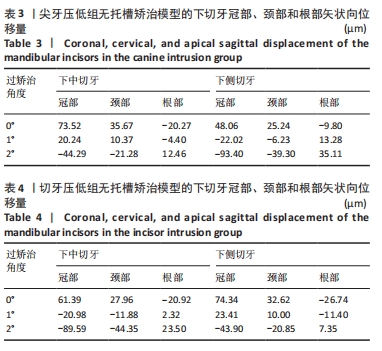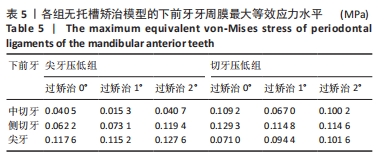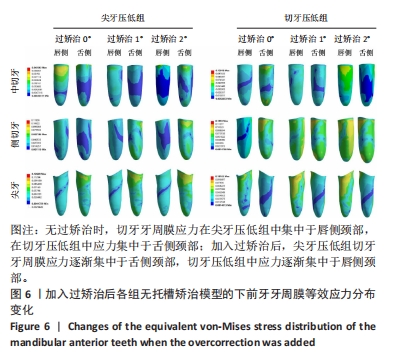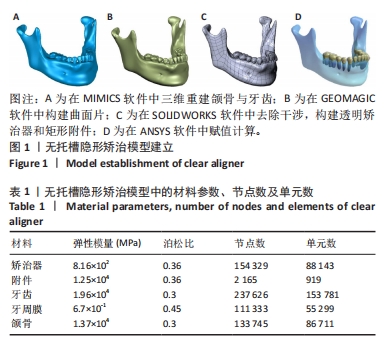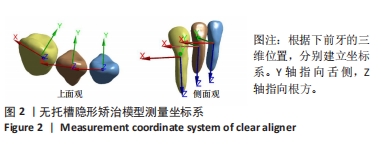[1] AL-ZOUBI EM, AL-NIMRI KS. A comparative study between the effect of reverse curve of Spee archwires and anterior bite turbos in the treatment of deep overbite cases. Angle Orthod. 2022;92(1):36-44.
[2] BARDIDEH E, TAMIZI G, SHAFAEE H, et al. The Effects of Intrusion of Anterior Teeth by Skeletal Anchorage in Deep Bite Patients; A Systematic Review and Meta-Analysis. Biomimetics (Basel). 2023;8(1):101.
[3] CHAWSHLI OF, HASAN HS, YALDA FA, et al. The success rate of mini-screws for incisors intrusion and patient age, gender, and insertion angle in the maxilla using CBCT and implant-guided surgery. A split-mouth, randomized control trail. Orthod Craniofac Res. 2023.doi: 10.1111/ocr.12700.
[4] ROSSINI G, PARRINI S, CASTROFLORIO T, et al. Efficacy of clear aligners in controlling orthodontic tooth movement: a systematic review. Angle Orthod. 2015;85(5):881-889.
[5] SHAHABUDDIN N, KANG J, JEON HH. Predictability of the deep overbite correction using clear aligners. Am J Orthod Dentofacial Orthop. 2023; 163(6):793-801.
[6] BLUNDELL HL DR, WEIR T DR, KERR B DR, et al. Predictability of overbite control with the Invisalign appliance. Am J Orthod Dentofacial Orthop. 2021; 160(5):725-731.
[7] AL-BALAA M, LI H, MA MOHAMED A, et al. Predicted and actual outcome of anterior intrusion with Invisalign assessed with cone-beam computed tomography. Am J Orthod Dentofacial Orthop. 2021;159(3):e275-e280.
[8] GRECO M, ROMBOLÀ A. Precision bite ramps and aligners: An elective choice for deep bite treatment. J Orthod. 2022;49(2):213-220.
[9] HENICK D, DAYAN W, DUNFORD R, et al. Effects of Invisalign (G5) with virtual bite ramps for skeletal deep overbite malocclusion correction in adults. Angle Orthod. 2021;91(2):164-170.
[10] ROZZI M, TIBERTI G, MUCEDERO M, et al. Leveling the curve of Spee: Comparison between continuous archwire treatment and Invisalign system: A retrospective study. Am J Orthod Dentofacial Orthop. 2022;162(5):645-655.
[11] MURO MP, CARACCIOLO ACA, PATEL MP, et al. Effectiveness and predictability of treatment with clear orthodontic aligners: A scoping review. Int Orthod. 2023;21(2):100755.
[12] CHARALAMPAKIS O, ILIADI A, UENO H, et al. Accuracy of clear aligners: A retrospective study of patients who needed refinement. Am J Orthod Dentofacial Orthop. 2018;154(1):47-54.
[13] PALONE M, PIGNOTTI A, MORIN E, et al. Analysis of overcorrection to be included for planning clear aligner therapy: a retrospective study. Angle Orthod. 2023;93(1):11-18.
[14] BILELLO G, FAZIO M, AMATO E, et al. Accuracy evaluation of orthodontic movements with aligners: a prospective observational study. Prog Orthod. 2022;23(1):12.
[15] ZHANG Y, GAO J, WANG X, et al. Biomechanical factors in the open gingival embrasure region during the intrusion of mandibular incisors: A new model through finite element analysis. Front Bioeng Biotechnol. 2023;11:1149472.
[16] MA Y, LI S. The optimal orthodontic displacement of clear aligner for mild, moderate and severe periodontal conditions: an in vitro study in a periodontally compromised individual using the finite element model. BMC Oral Health. 2021;21(1):109.
[17] CAO Y, WANG ZW, CHEN D, et al. The effect of space arrangement between anterior teeth on their retraction with clear aligners in first premolar extraction treatment: a finite element study. Prog Orthod. 2023;24(1):39.
[18] LIU X, WU J, CHENG Y, et al. Effective contribution ratio of the molar during sequential distalization using clear aligners and micro-implant anchorage: a finite element study. Prog Orthod. 2023;24(1):35.
[19] WANG Q, DAI D, WANG J, et al. Biomechanical analysis of effective mandibular en-masse retraction using Class II elastics with a clear aligner: a finite element study. Prog Orthod. 2022;23(1):23.
[20] LIU L, SONG Q, ZHOU J, et al. The effects of aligner overtreatment on torque control and intrusion of incisors for anterior retraction with clear aligners: A finite-element study. Am J Orthod Dentofacial Orthop. 2022;162(1):33-41.
[21] YANG Y, YANG R, LIU L, et al. The effects of aligner anchorage preparation on mandibular first molars during premolar-extraction space closure with clear aligners: A finite element study. Am J Orthod Dentofacial Orthop. 2023;164(2):226-238.
[22] LIU L, ZHAN Q, ZHOU J, et al. Effectiveness of an anterior mini-screw in achieving incisor intrusion and palatal root torque for anterior retraction with clear aligners. Angle Orthod. 2021;91(6):794-803.
[23] CHENG Y, LIU X, CHEN X, et al. The three-dimensional displacement tendency of teeth depending on incisor torque compensation with clear aligners of different thicknesses in cases of extraction: a finite element study. BMC Oral Health. 2022;22(1):499.
[24] WANG S, HUANG Y, FAN D, et al. Effects of overtreatment with different attachment positions on maxillary anchorage enhancement with clear aligners: a finite element analysis study. BMC Oral Health. 2023;23(1):693.
[25] CHENG Y, GAO J, FANG S, et al. Torque movement of the upper anterior teeth using a clear aligner in cases of extraction: a finite element study. Prog Orthod. 2022;23(1):26.
[26] YAO S, JIANG W, WANG C, et al. Improvements of tooth movement efficiency and torque control in expanding the arch with clear aligners: a finite element analysis. Front Bioeng Biotechnol. 2023;11:1120535.
[27] GARLOCK DT, BUSCHANG PH, ARAUJO EA, et al. Evaluation of marginal alveolar bone in the anterior mandible with pretreatment and posttreatment computed tomography in nonextraction patients. Am J Orthod Dentofacial Orthop. 2016;149(2):192-201.
[28] GUO Z, ZHANG R, GUO C, et al. A retrospective study of alveolar bone remodelling after anterior retraction in orthodontic tooth extraction cases with clear aligners and fixed appliances. Orthod Craniofac Res. 2023. doi: 10.1111/ocr.12705.
[29] SADEK MM, GABER RM. Alveolar bone changes around maxillary incisors after intrusion and retraction with controlled tipping versus bodily movement : A retrospective cone-beam computed tomography study. J Orofac Orthop. 2023. doi: 10.1007/s00056-023-00493-z.
[30] MORAD G, BEHNIA H, MOTAMEDIAN SR, et al. Thickness of labial alveolar bone overlying healthy maxillary and mandibular anterior teeth. J Craniofac Surg. 2014;25(6):1985-1991.
[31] CASANOVA-SARMIENTO JA, ARRIOLA-GUILLÉN LE, RUÍZ-MORA GA, et al. Comparison of anterior mandibular alveolar thickness and height in young adults with different sagittal and vertical skeletal relationships: A CBCT Study. Int Orthod. 2020;18(1):79-88.
[32] FORMOSA J, ZOU M, CHUNG CH, et al. Mandibular alveolar bone thickness in untreated Class I subjects with different vertical skeletal patterns: a cone-beam computed tomography study. Angle Orthod. 2023;93(6):683-694.
[33] LI Y, XIAO S, JIN Y, et al. Stress and movement trend of lower incisors with different IMPA intruded by clear aligner: a three-dimensional finite element analysis. Prog Orthod. 2023;24(1):5.
[34] MOGA RA, BURU SM, CHIOREAN CG. Overall stress in periodontal ligament under orthodontic movement during a periodontal breakdown. Am J Orthod Dentofacial Orthop. 2022;161(2):e127-e135.
[35] LIU Y, HU W. Force changes associated with different intrusion strategies for deep-bite correction by clear aligners. Angle Orthod. 2018;88(6):771-778.
[36] NUCERA R, DOLCI C, BELLOCCHIO AM, et al. Effects of Composite Attachments on Orthodontic Clear Aligners Therapy: A Systematic Review. Materials (Basel). 2022;15(2):533.
[37] 廖乃麒,钱语然,李渊,等.无托槽隐形矫治拔牙病例上切牙压低实现量及其影响因素分析[J].口腔疾病防治,2023,31(10):720-726.
[38] WU Y, YU Q, XIA Y, et al. Does mandibular advancement with clear aligners have the same skeletal and dentoalveolar effects as traditional functional appliances? BMC Oral Health. 2023;23(1):65.
[39] ZHU Y, HU W, LI S. Force changes associated with differential activation of en-masse retraction and/or intrusion with clear aligners. Korean J Orthod. 2021;51(1):32-42.
[40] 康芙嘉,吴聿淼,刘心雨,等.不同前牙唇倾度及内收压低步距下隐形矫治器作用的比较:三维有限元研究[J].口腔医学研究,2023,39(4): 345-349.
[41] MAO B, TIAN Y, XIAO Y, et al. The effect of maxillary molar distalization with clear aligner: a 4D finite-element study with staging simulation. Prog Orthod. 2023;24(1):16. |
